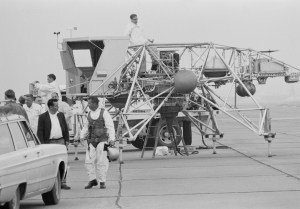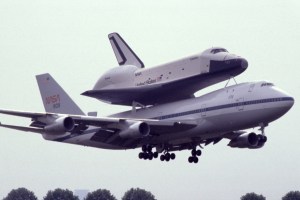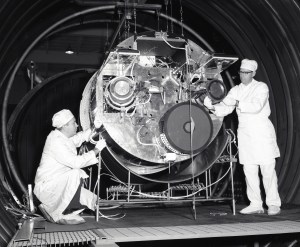The primary goals of Project Gemini included proving the techniques required for the Apollo Program to fulfill President John F. Kennedy’s goal of landing a man on the Moon and returning him safely to Earth before the end of the 1960s. Paramount among those techniques was rendezvous and docking, required to implement the Lunar Orbit Rendezvous method NASA chose for the Moon landing missions. Additional goals of Gemini included proving that astronauts could work outside their spacecraft during spacewalks and ensuring that spacecraft and astronauts could function for at least eight days, then considered the minimum time for a roundtrip mission to the Moon. The first seven Gemini missions in 1965 and early 1966 demonstrated the spacecraft’s space worthiness, the feasibility of spacewalking, extended flight durations to 14 days, and demonstrated space rendezvous and docking techniques. The goals of the three-day Gemini X mission included docking with one target vehicle, conducting a rendezvous with a second target, and performing two spacewalks.
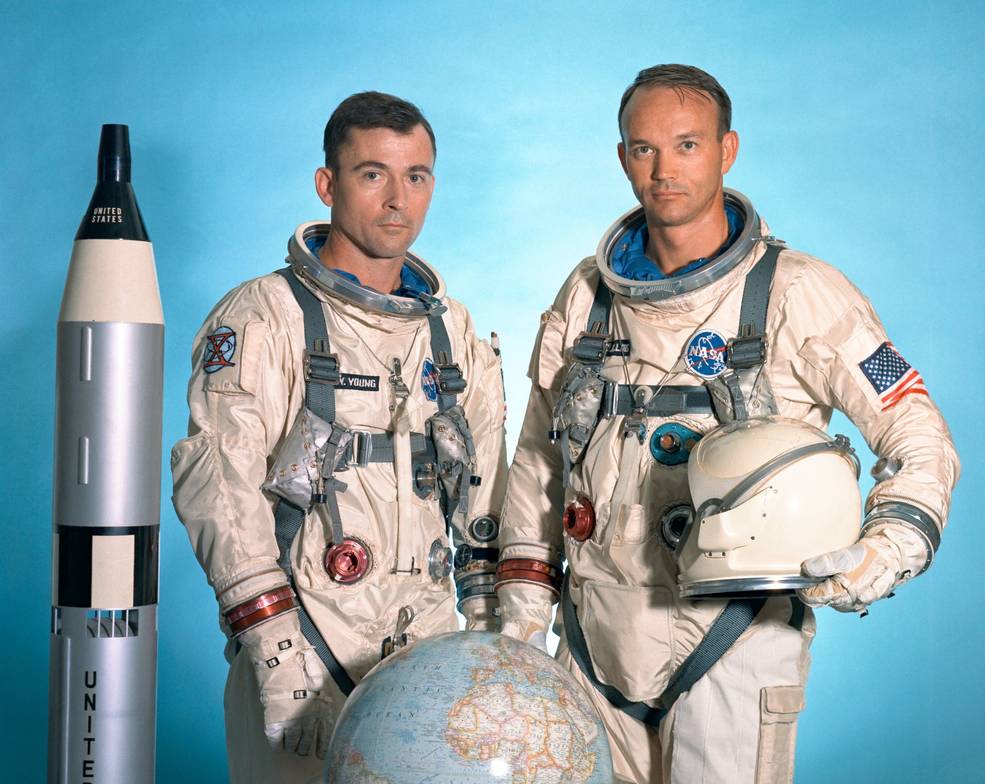
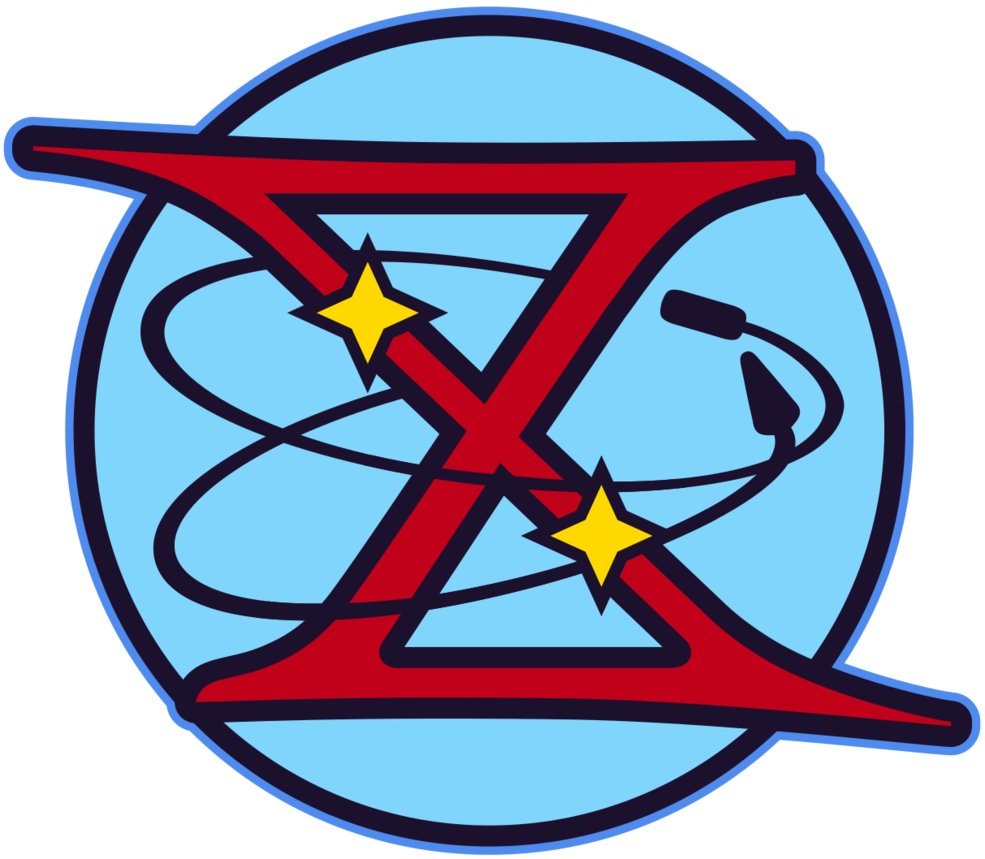
Left: Gemini X crew of John W. Young, left, and Michael Collins.
Right: The Gemini X crew patch.
In January 1966, NASA named Gemini 3 veteran John W. Young and spaceflight rookie Michael Collins as the prime crew for Gemini X, with Gemini VII veteran James A. Lovell and rookie Edwin E. “Buzz” Aldrin, as their backups. With the reshuffling of crews following the deaths on Feb. 28 of the Gemini IX crew of Elliot M. See and Charles A. Bassett, on March 21 NASA assigned Alan L. Bean and Clifton C. Williams as the new Gemini X backup crew.
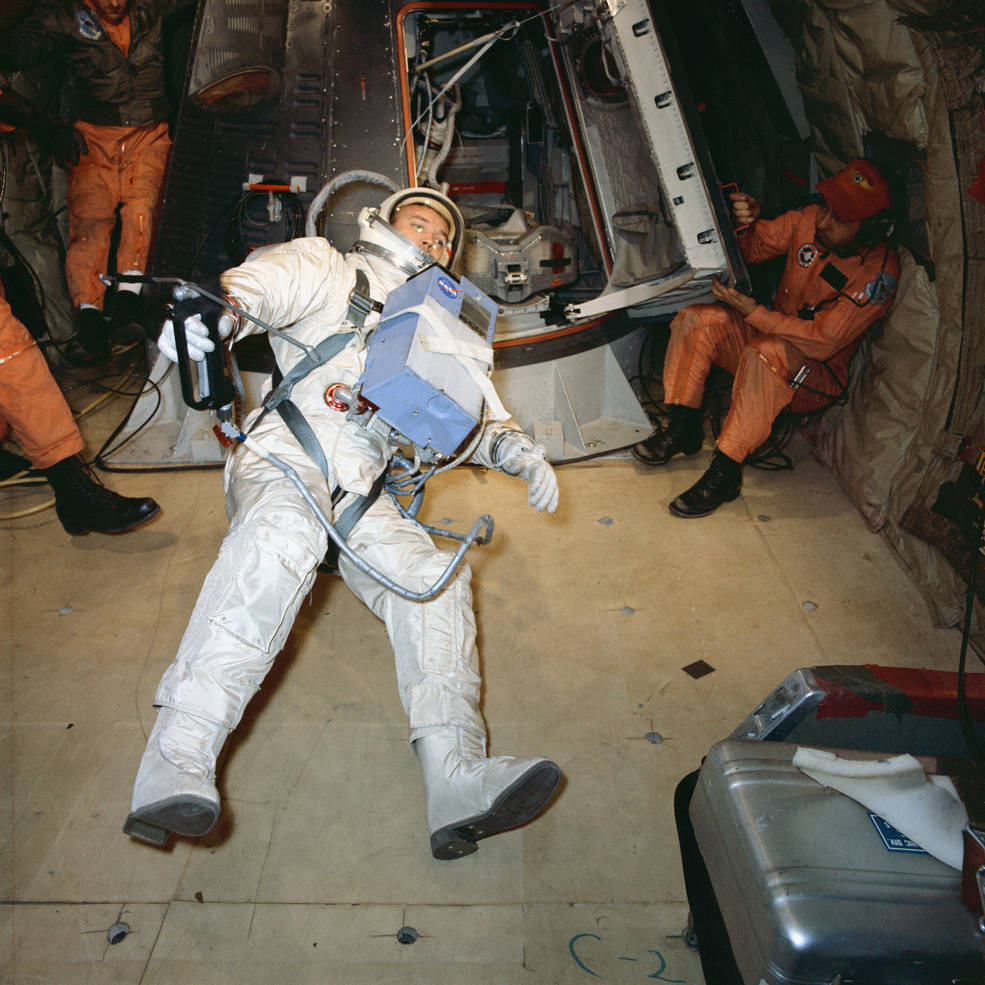
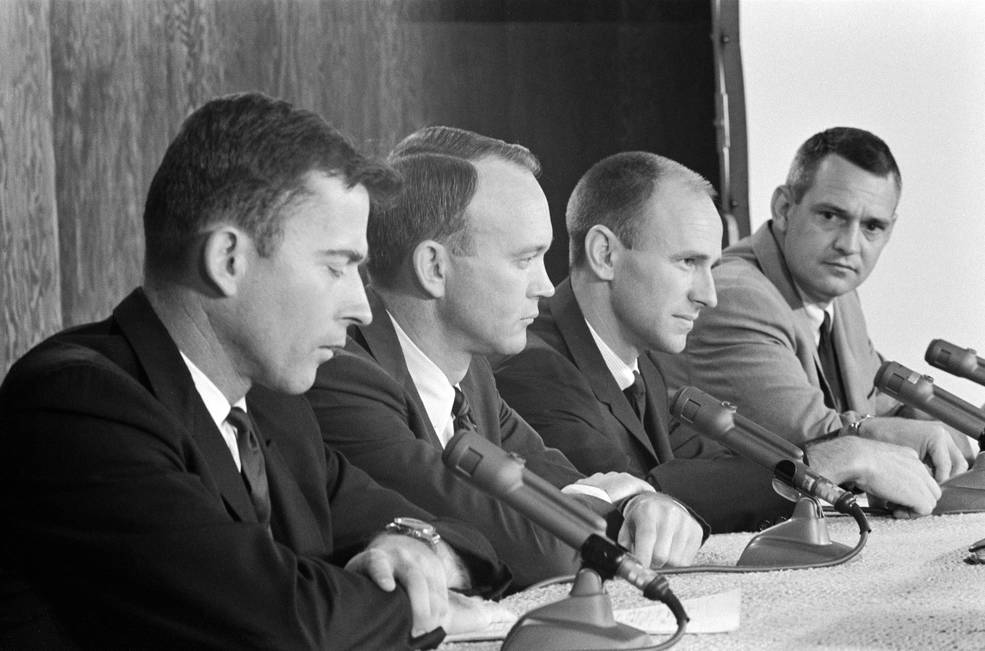
Left: Collins practices using the Hand-Held Maneuvering Unit during his spacewalk
training in a zero-gravity aircraft. Right: Preflight press conference with the
Gemini X prime crew of John W. Young, left, and Michael Collins, and the
backup crew of Alan L. Bean, and Clifton C. Williams.
On July 2, Young and Collins, along with their backups Bean and Williams, described their planned three-day mission to reporters during a press conference at the Manned Spacecraft Center (MSC), now NASA’s Johnson Space Center in Houston. The flight plan called for Gemini X to launch about 90 minutes after the Agena X docking target vehicle and confirmation that the target had achieved the correct orbit. Young and Collins would dock their Gemini spacecraft with the Agena target on their fourth revolution. Shortly after, they would fire the Agena’s engine to raise the docked spacecraft’s altitude and fire it a second time to set up for a rendezvous with the Gemini VIII Agena, in orbit since March 1966 and no longer functioning. Collins would perform a stand-up spacewalk from the Gemini’s hatch to conduct photography experiments. After releasing their own Agena, Young would maneuver Gemini X close to Agena VIII and Collins would perform his second spacewalk lasting about 90 minutes. Floating over to Agena VIII, he would retrieve experiment samples. They would return to Earth after a three-day mission, to be recovered in the Atlantic Ocean.
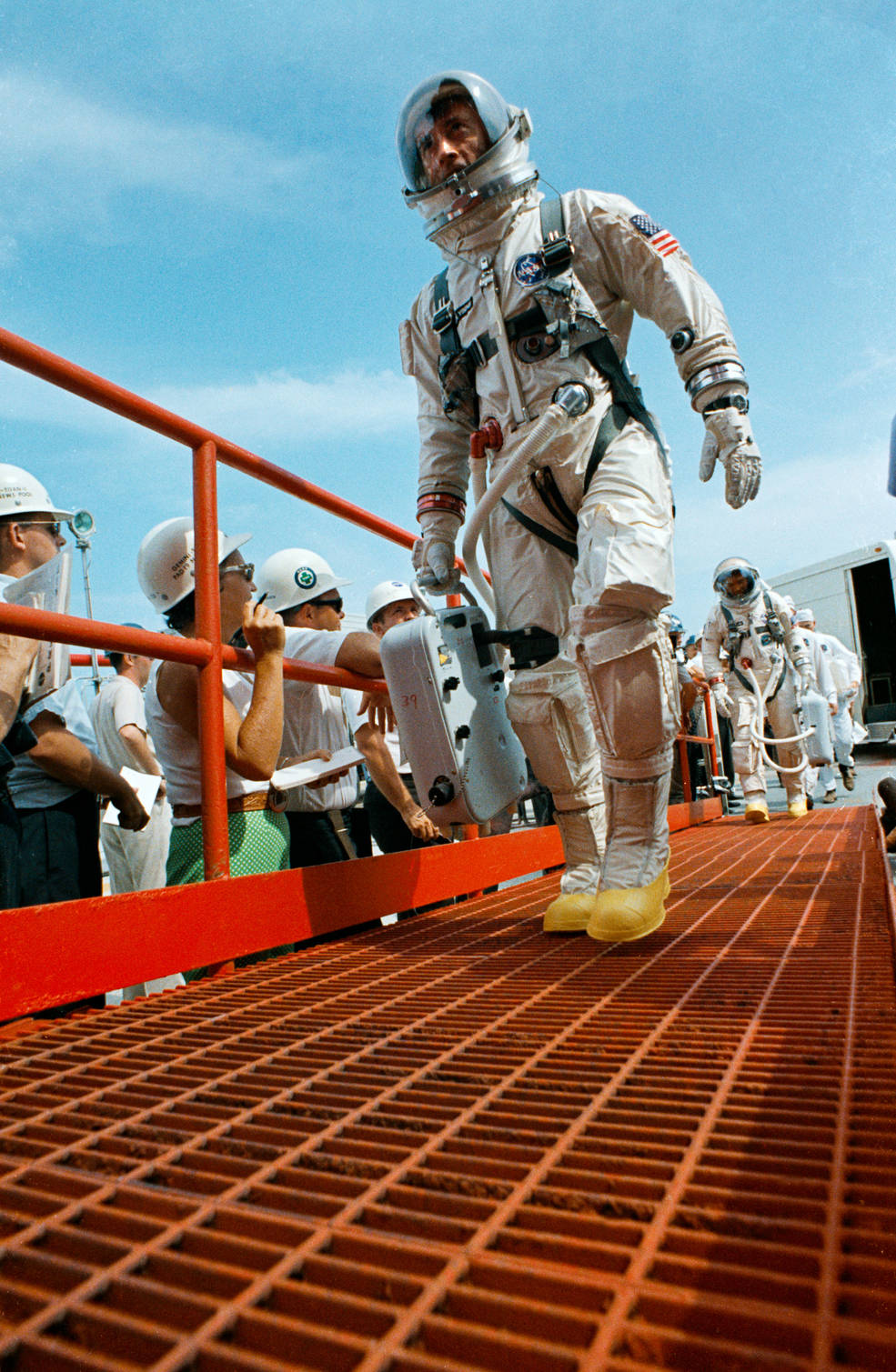
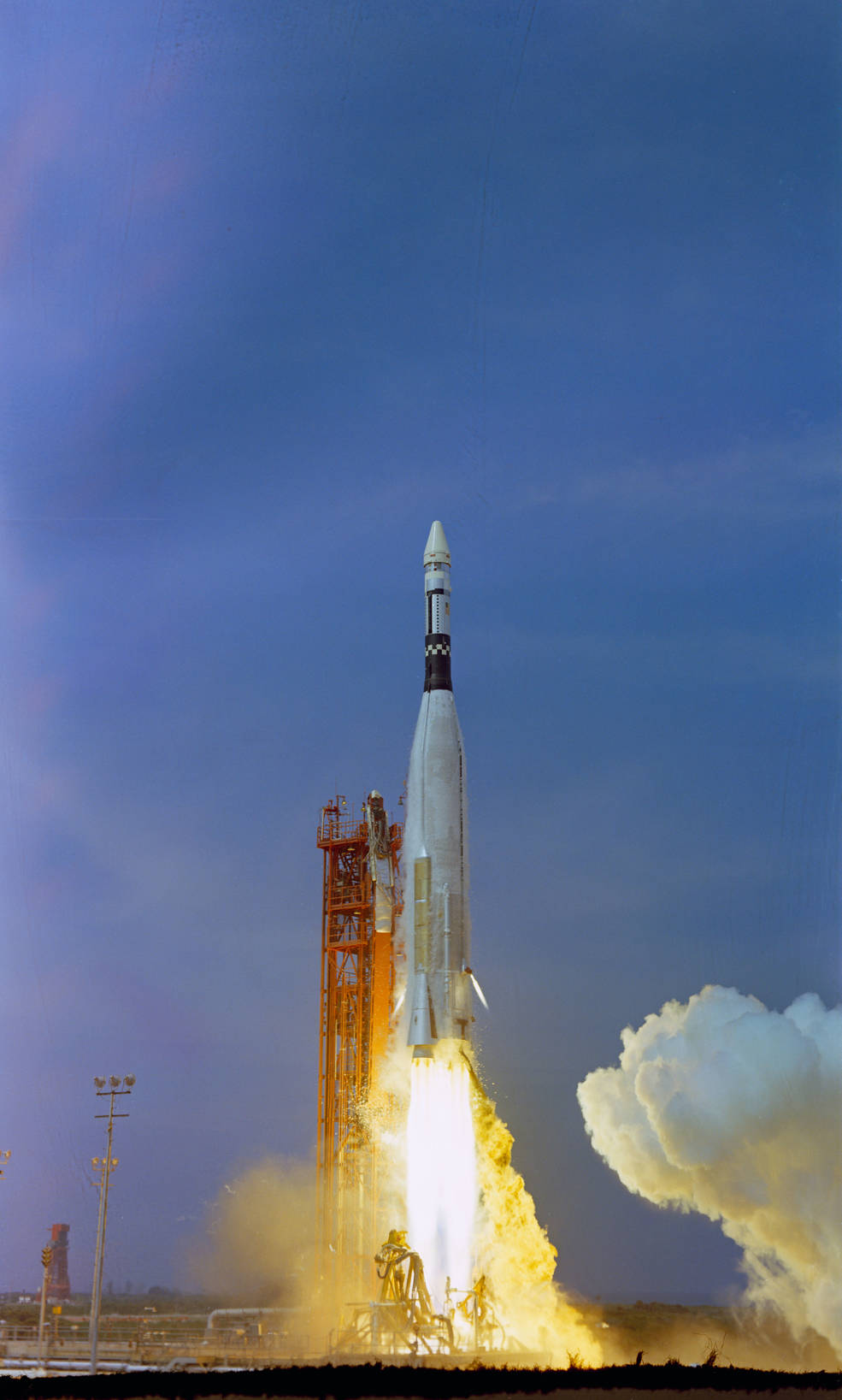
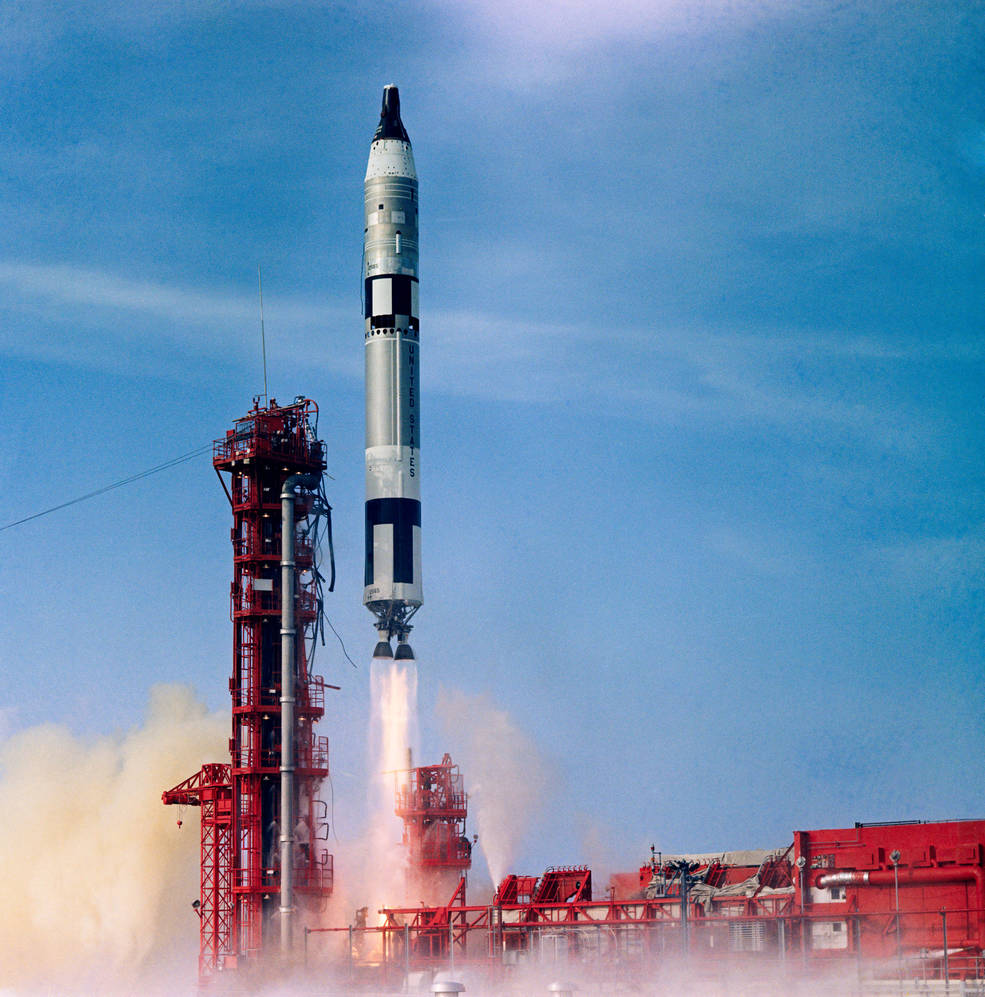
Left: NASA astronauts John W. Young, left, and Michael Collins arrive at Launch Pad 19
at the Cape Kennedy Air Force Station, now the Cape Canaveral Space Force Station, to
board their Gemini X spacecraft. Middle: The launch of the Agena X Target Vehicle.
Right: The launch of Gemini X.
The dual countdowns for the Agena X target and Gemini X were the smoothest in the program, leading to on time launches 90 minutes apart on July 18, 1966. A team of controllers at the Mission Control Center at MSC led by Flight Director Glynn S. Lunney monitored the launches. Less than six hours after liftoff, Young brought Gemini X in for a docking with the Agena X target over the Pacific Ocean. Less than two hours later, they fired the Agena’s big engine to raise the high point of their orbit to a then-record 473 miles. “That was really something,” said Young. “When that baby lights,” he added, “there’s no doubt about it!” After a long day, the crew began an eight-hour sleep period.
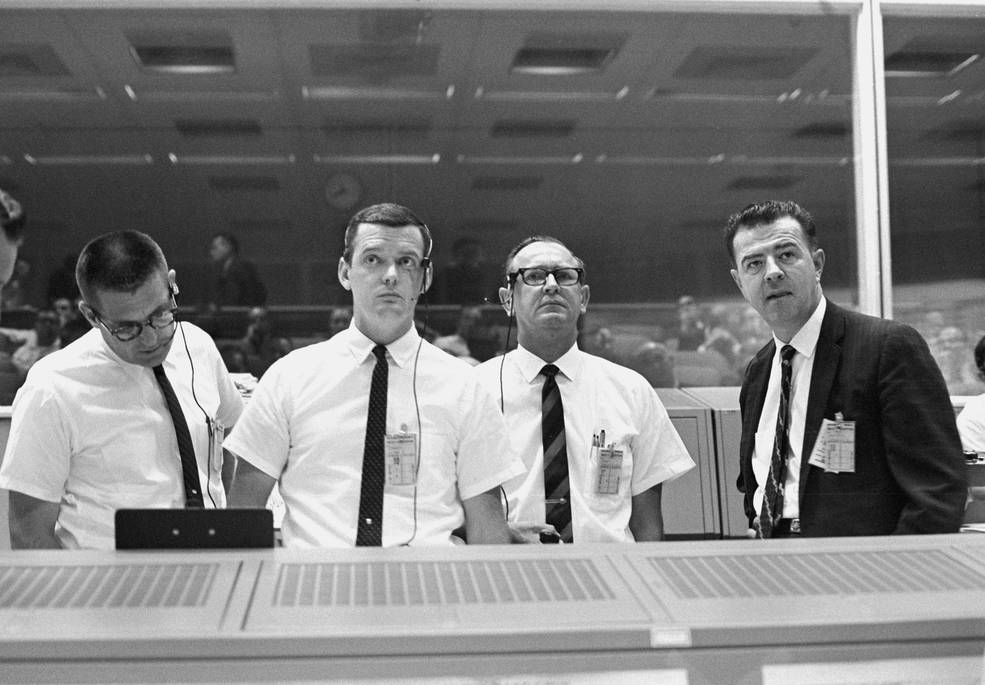
Left: Flight Director Glynn S. Lunney, second from left, and mission
managers monitor the first day of the Gemini X mission.
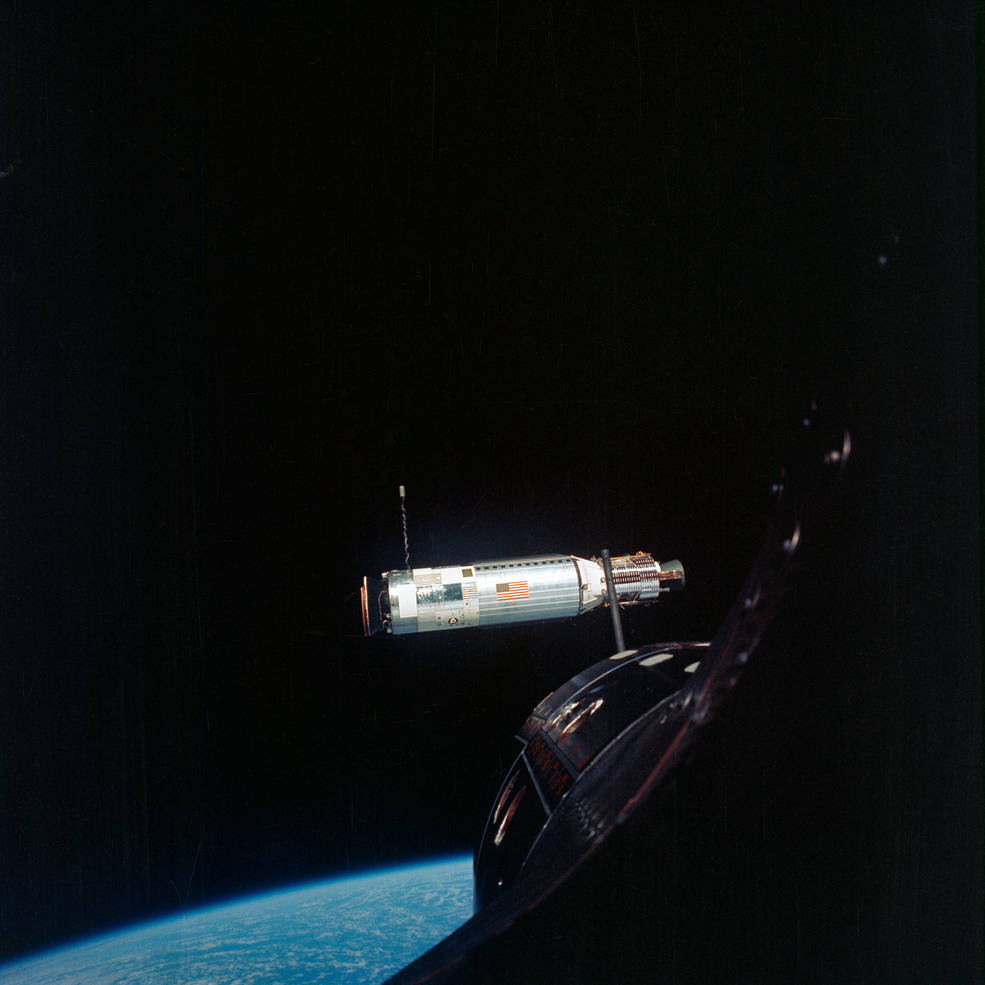
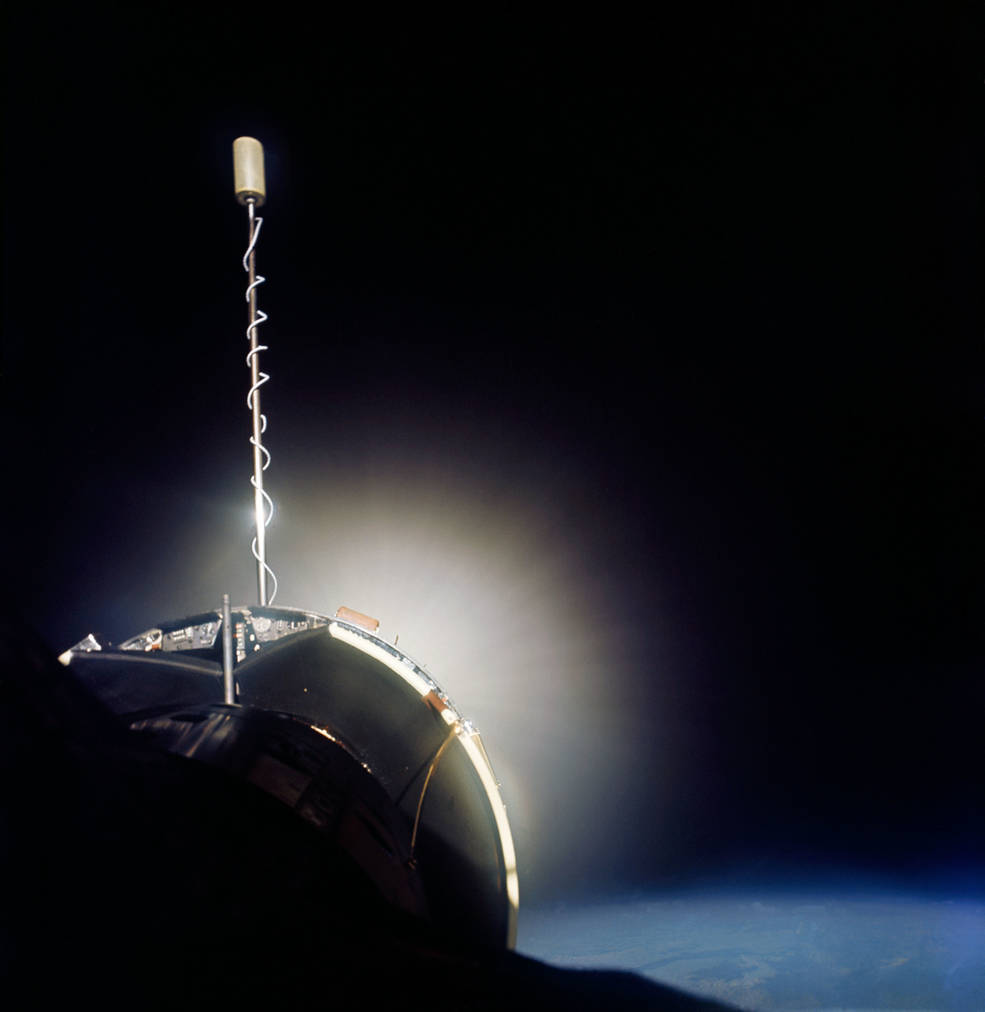
Left: Gemini X about 41 feet from the Agena X target shortly before docking.
Right: Once docked, the Agena’s engine fired to raise the joined spacecraft’s
altitude to a then-record 473 miles.
On the morning of their second day in space, Young and Collins fired the Agena X’s engine a second time to lower their altitude and prepare them for the rendezvous with the Agena VIII target. Collins opened the hatch to perform his standup spacewalk to conduct a study of stellar ultraviolet radiation and take photographs. They cut the spacewalk short by about six minutes when an irritant in their suits’ ventilation system caused their eyes and throats to burn. The standup spacewalk lasted 49 minutes. After conducting additional engine burns for the next day’s rendezvous, the crew went to sleep.
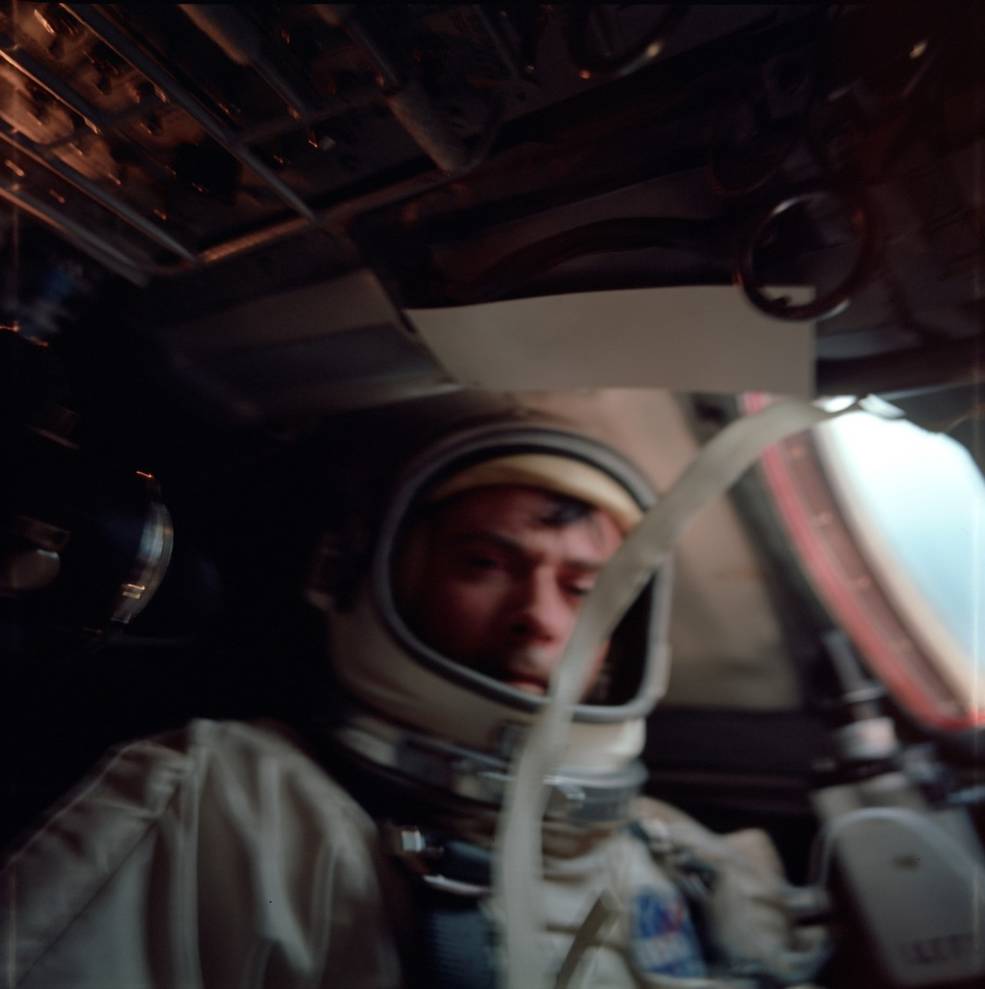
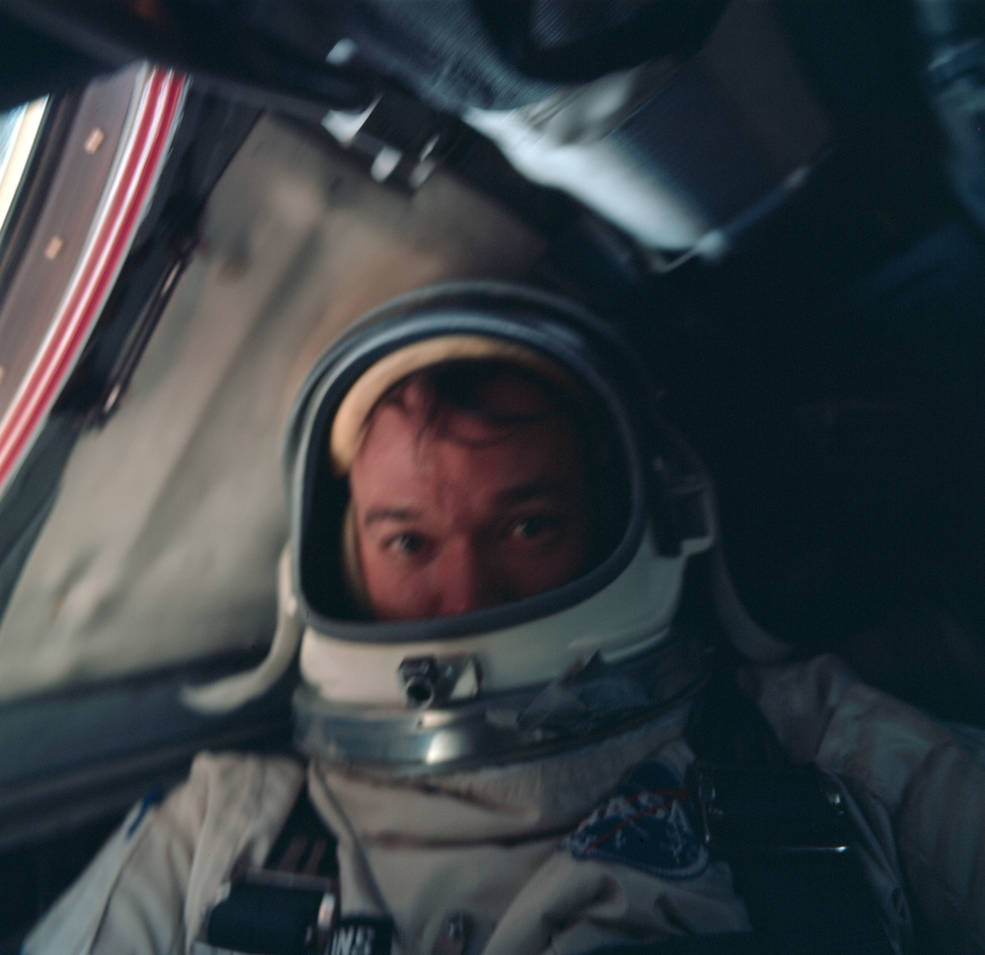
John W. Young, left, and Michael Collins photographed each other during
the Gemini X mission showing the tight confines of the spacecraft.
After remaining docked for 39 hours, they released the Agena X and completed the rendezvous to Agena VIII using the Gemini spacecraft thrusters. Young brought the Gemini to within nine feet of the target as Collins opened the hatch to begin his spacewalk. He retrieved the Hand-Held Maneuvering Unit (HHMU) as Young brought their spacecraft to within six feet of the Agena. Collins pushed off, floated between the two spacecraft, and easily grasped the docking cone on the Agena. But without handholds he found it difficult to remain stable and retrieve the experiment package and he drifted off, secured only by his 45-foot tether. He used the HHMU to maneuver back to the Agena and retrieved the experiment package. With Gemini’s fuel running low due to the station keeping maneuvers, Mission Control decided to cut the spacewalk short and ordered Collins back into the spacecraft. Instead of 90 minutes, the activity concluded after 39 minutes. An hour later, they opened the hatches for three minutes to discard some unneeded items, and completed a critical maneuver to align their trajectory for the next day’s reentry burn. They settled in for their third and final sleep period of the mission.
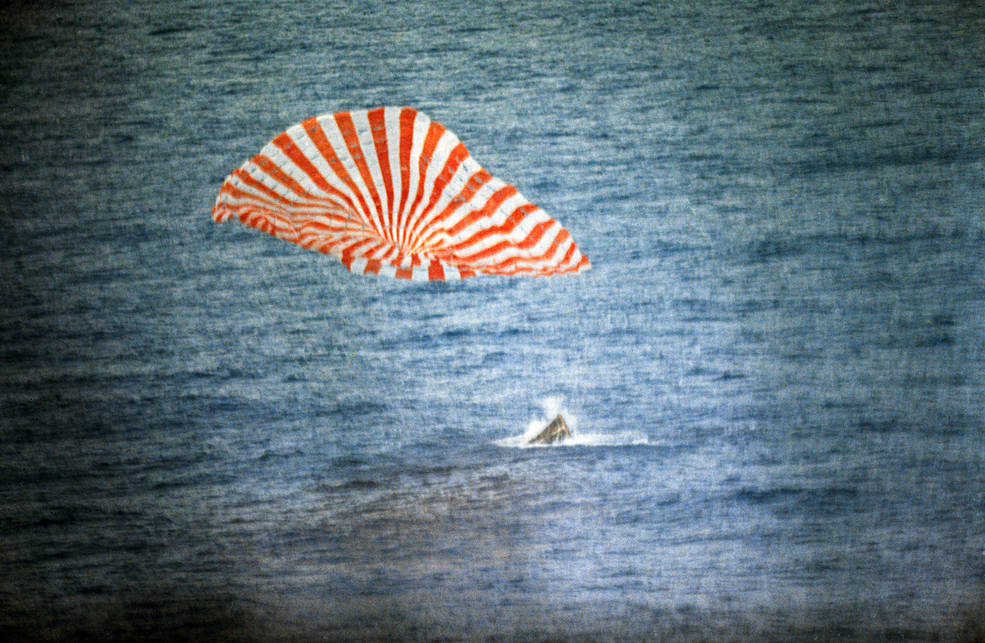
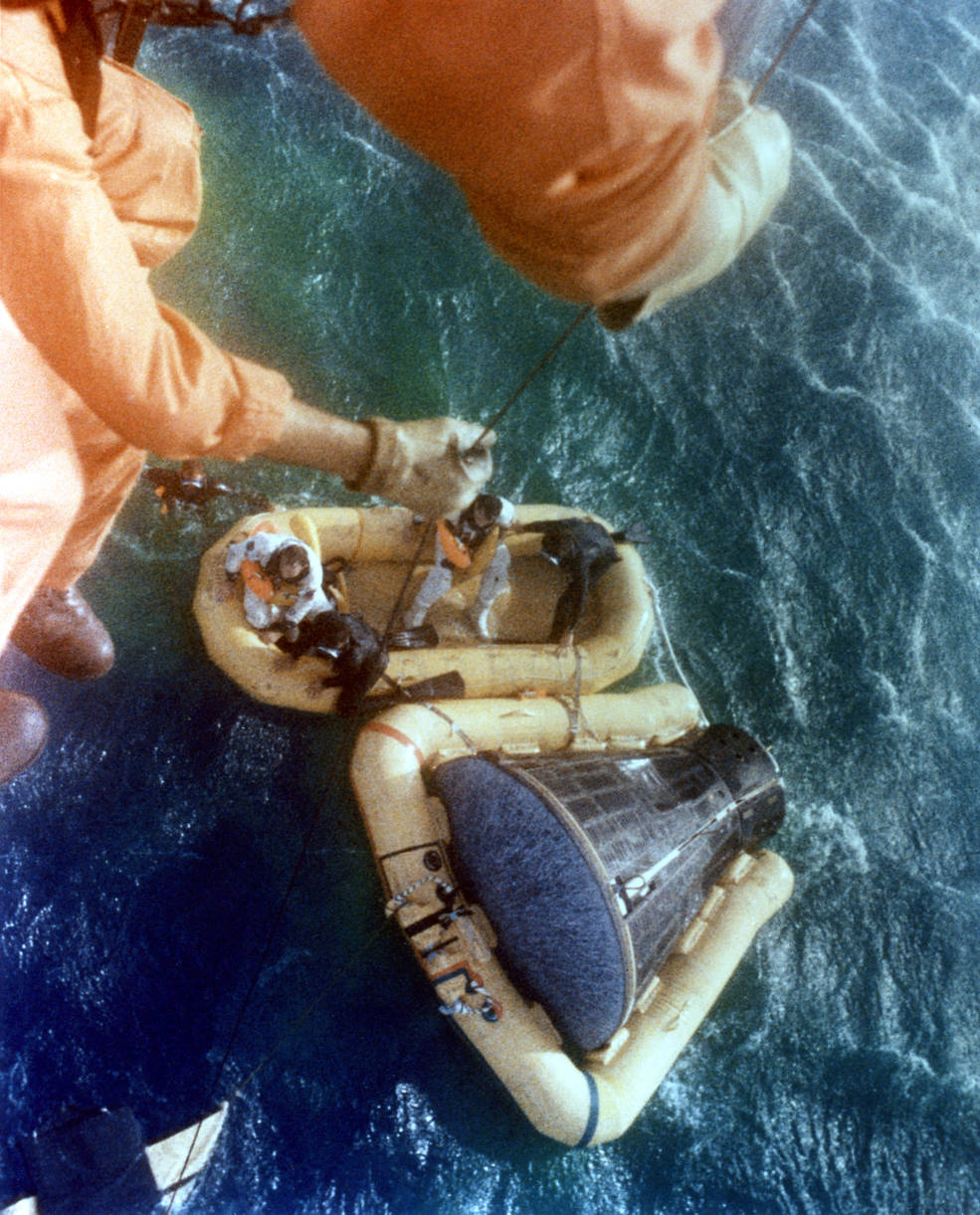
Left: The Gemini X spacecraft at the moment of splashdown. Right: Gemini X
astronauts Michael Collins, left, and John W. Young in the life raft
following splashdown, awaiting pickup by the helicopter crew.
Upon awakening on their last day in space, Young and Collins tidied up their spacecraft in preparation for the retrorocket burn that brought them out of orbit and headed toward home. Splashdown on July 21 less than four miles from the prime recovery ship U.S.S. Guadalcanal (CVE-60) concluded their successful mission after 70 hours and 46 minutes. Young and Collins elected to exit their spacecraft in the water and onto a life raft. Rescue crews hoisted them aboard a helicopter that flew them to the deck of the carrier for a celebratory welcome home reception. Sailors later hoisted the Gemini X spacecraft onto the ship. The astronauts flew by helicopter back to NASA’s Kennedy Space Center in Florida for several days of debriefings before returning to Houston’s Ellington Air Force Base near MSC for reunions with their families.
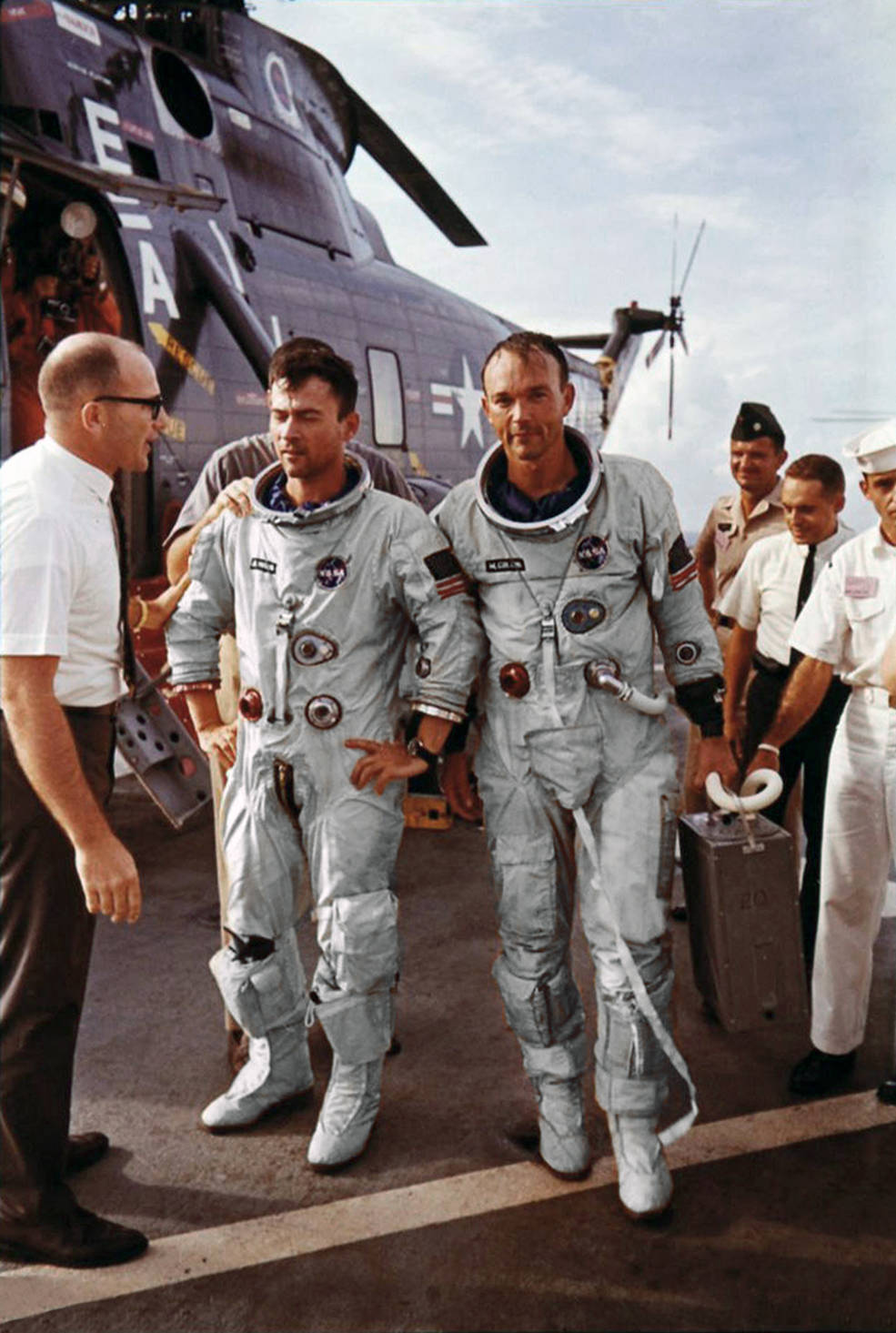
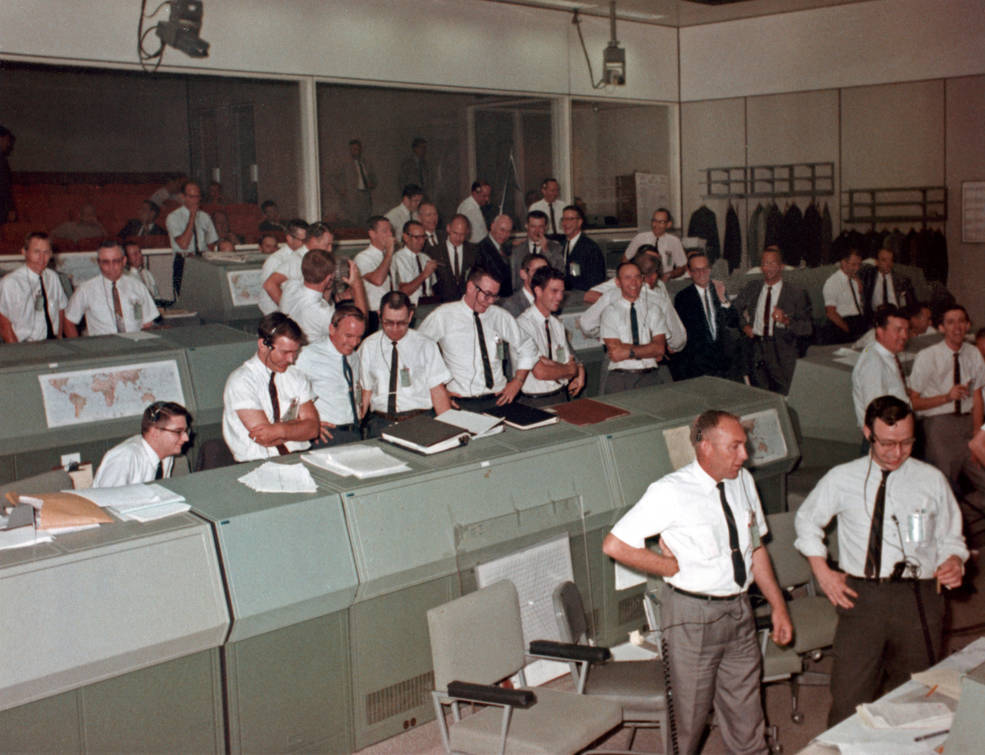
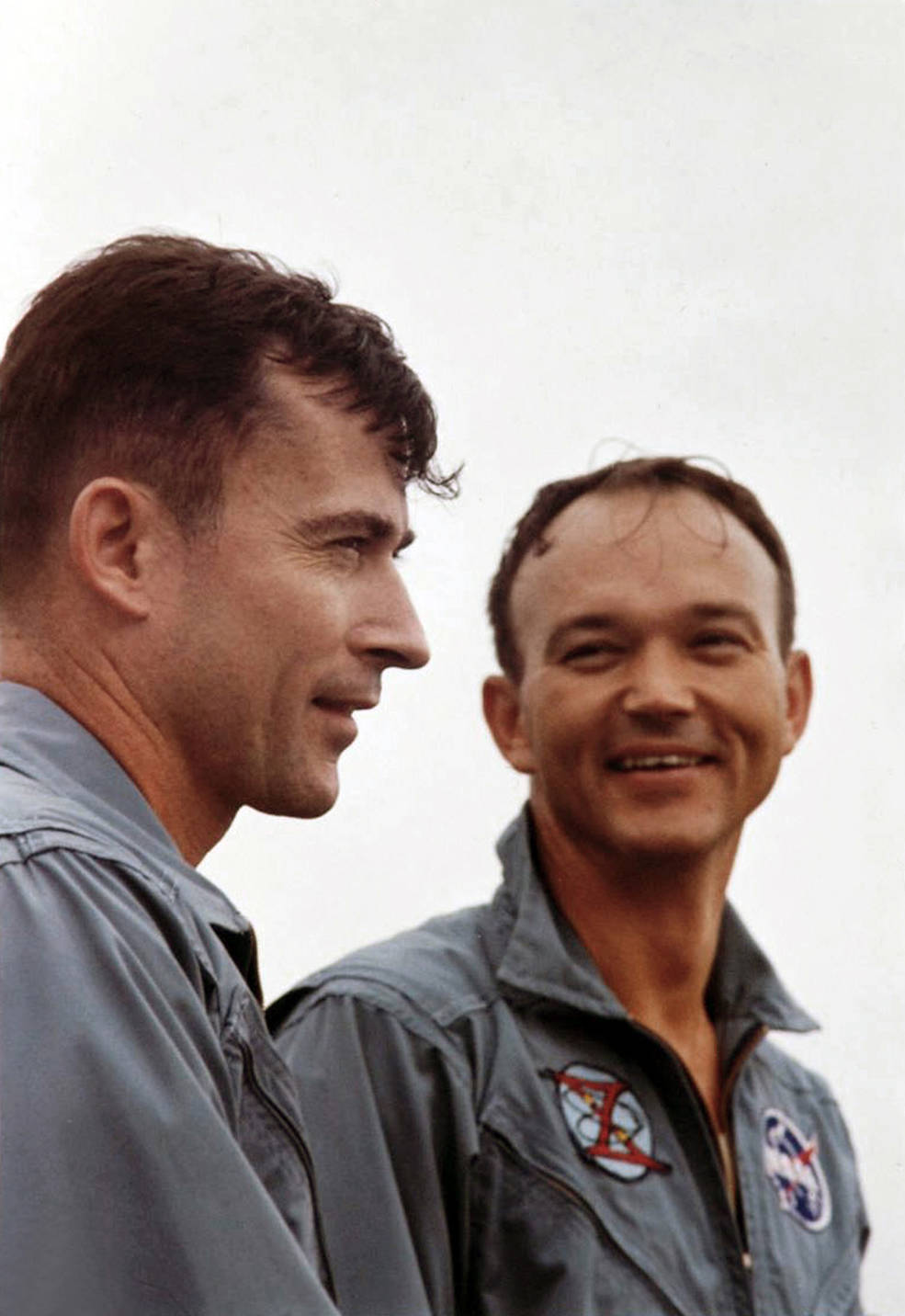
Left: Gemini X astronauts John W. Young, left, and Michael Collins on the deck
of the prime recovery ship the U.S.S. Guadalcanal. Middle: The Mission
Control Center at the Manned Spacecraft Center, now NASA’s Johnson
Space Center in Houston, following the Gemini X splashdown.
Right: Young, left, and Collins following their return to
NASA’s Kennedy Space Center in Florida.
On August 1, Young and Collins summarized their mission, including narrating a film of their flight, to assembled reporters during a press conference in MSC’s main auditorium. Robert C. Seamans, NASA deputy administrator, presented Young and Collins with NASA Exceptional Service Medals in recognition of their groundbreaking mission to help America achieve President Kennedy’s goal of a Moon landing. In summarizing the program up to that point, Seamans said, “Gemini has done more to open the way to the Moon than we could have hoped for five years ago.” The Gemini X spacecraft is on display at the Cosmosphere in Hutchinson, Kansas.
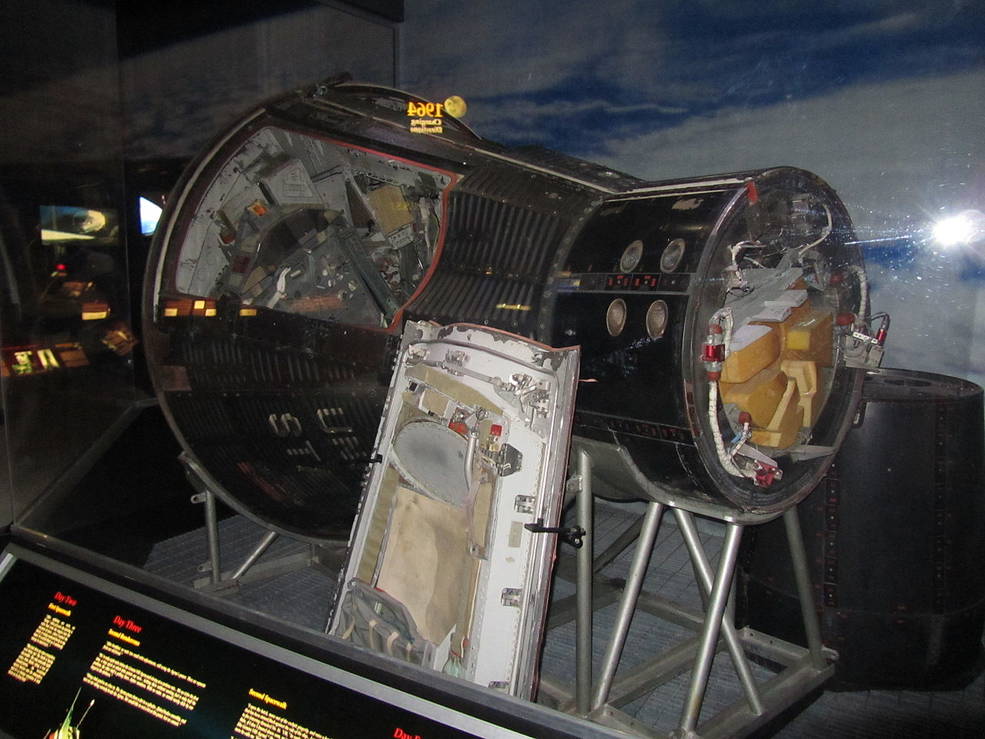
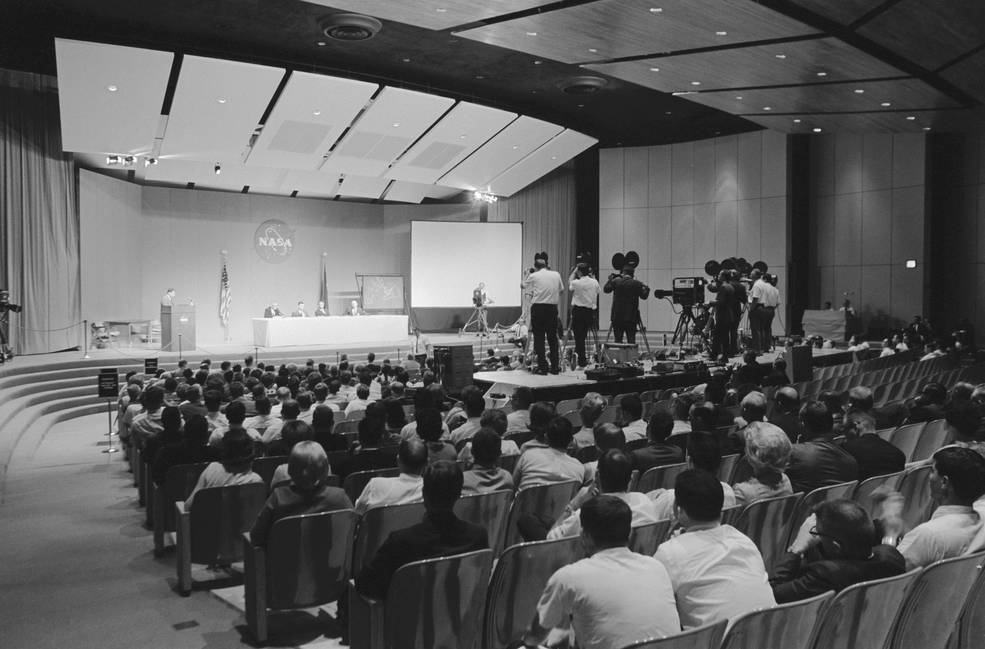
Left: Gemini X astronauts John W. Young and Michael Collins on the stage
of the auditorium of the Manned Spacecraft Center, now NASA’s Johnson
Space Center in Houston, for the postflight press conference.
Right: The Gemini X capsule on display at the Cosmosphere in
Hutchinson, Kansas. Image credit: Cosmosphere.
Enjoy a video of the Gemini X mission.
John Uri
NASA Johnson Space Center





























